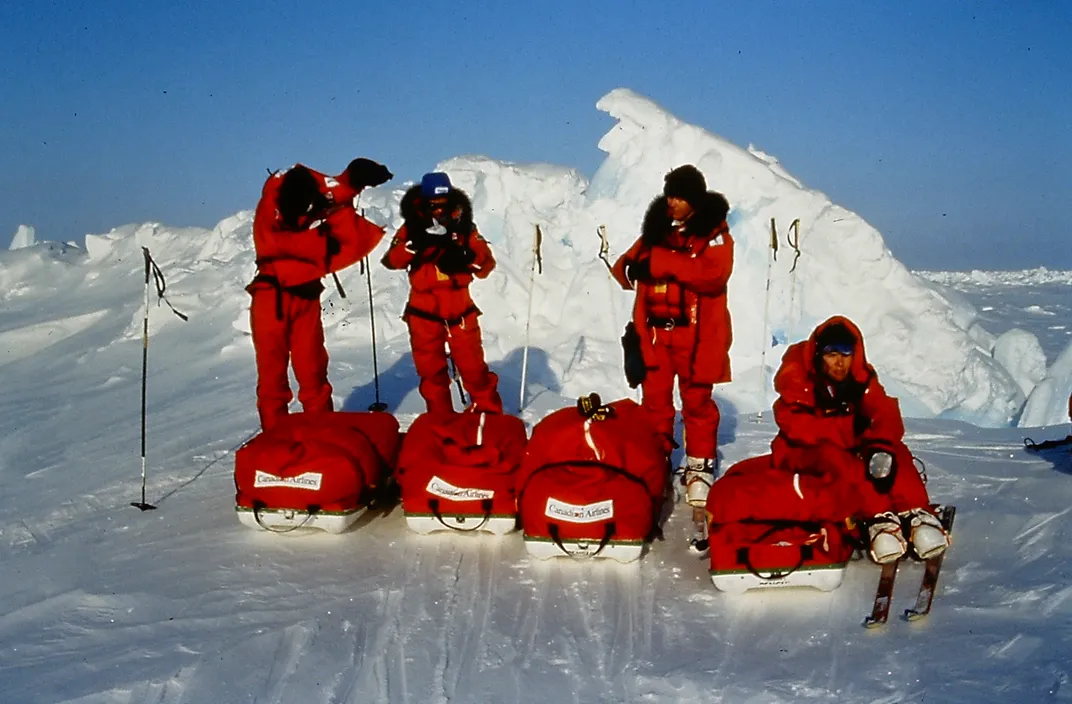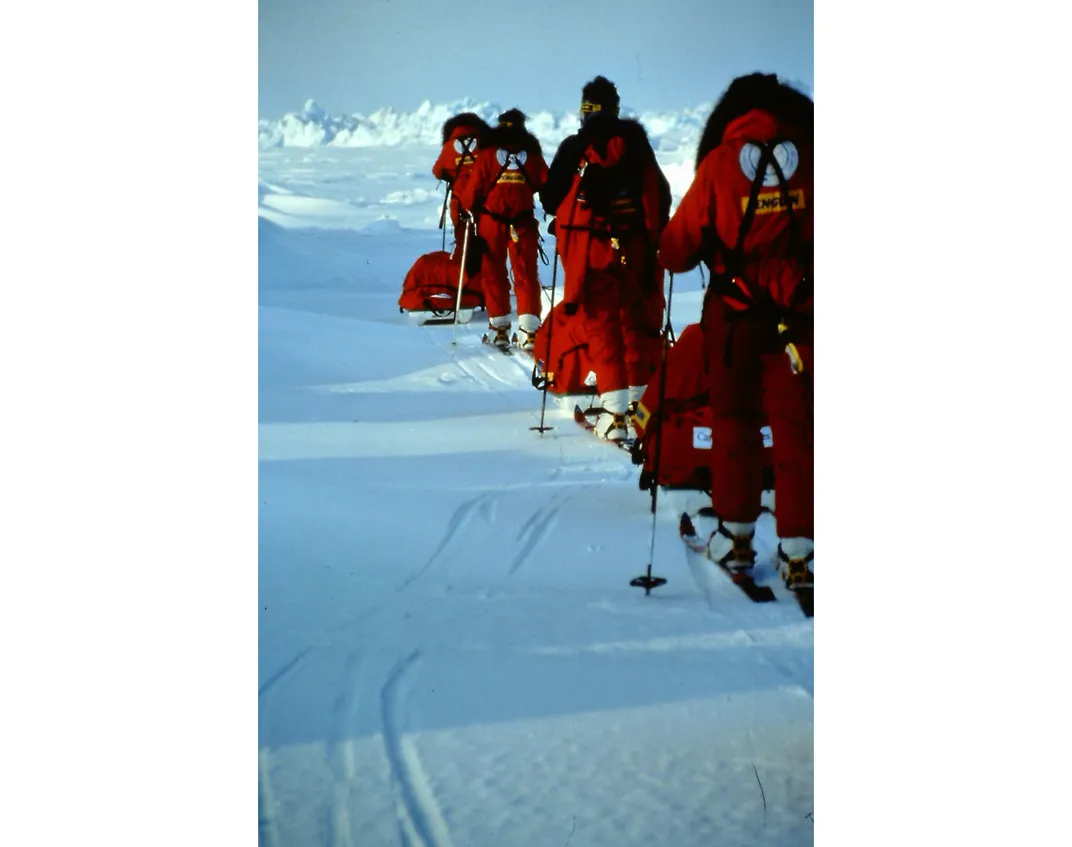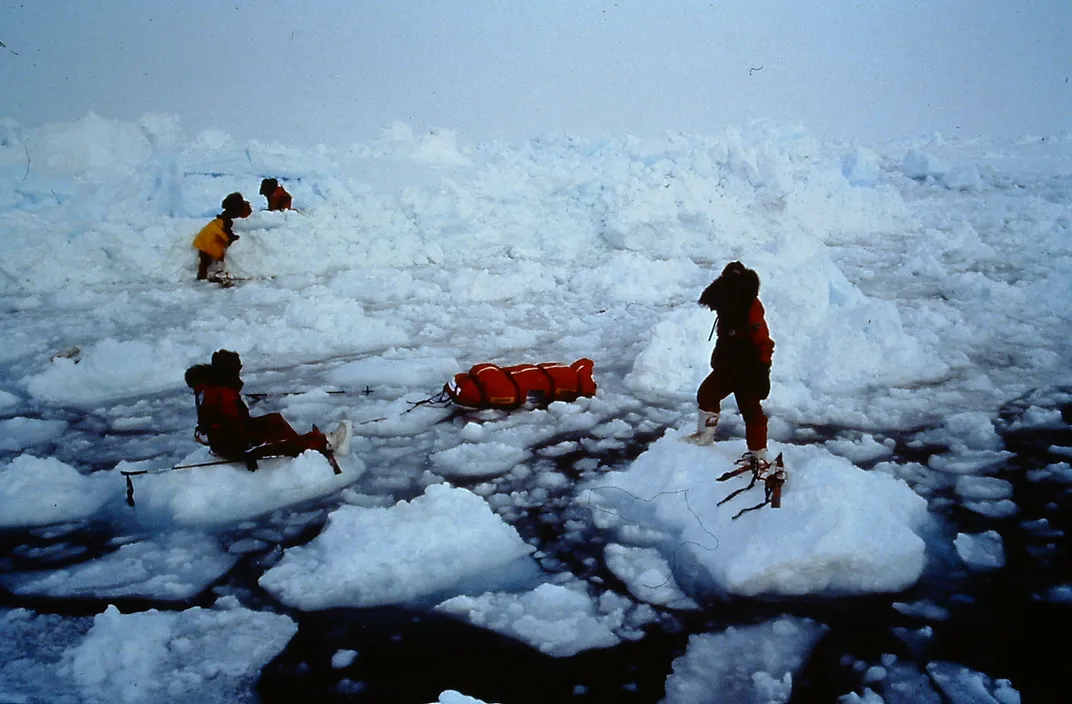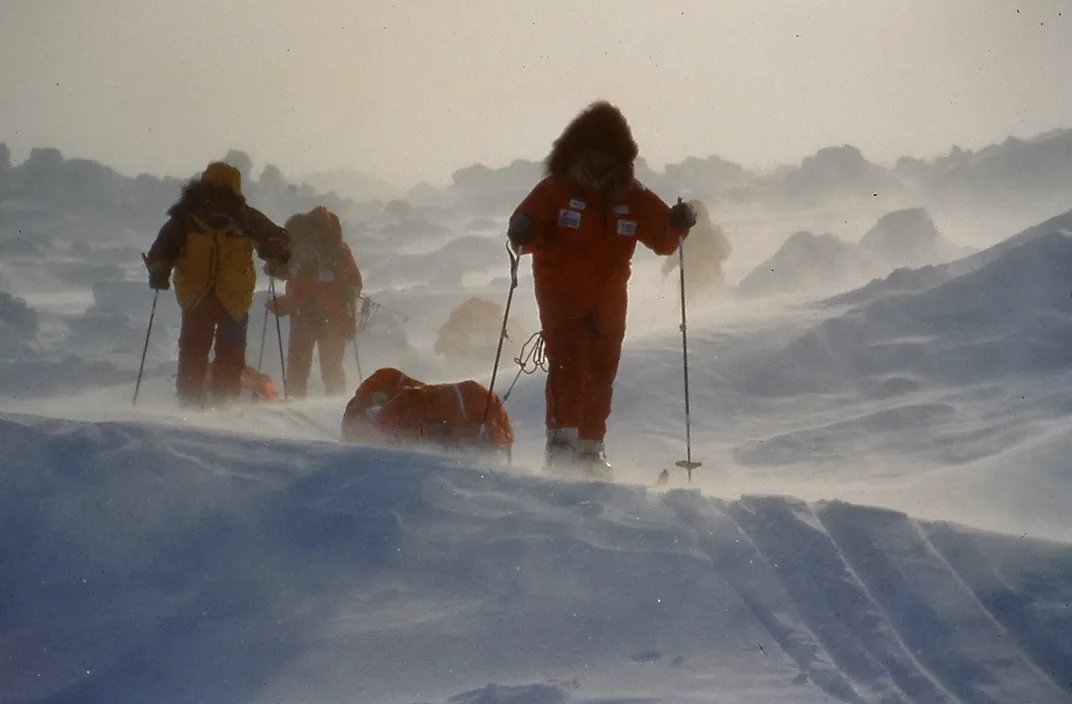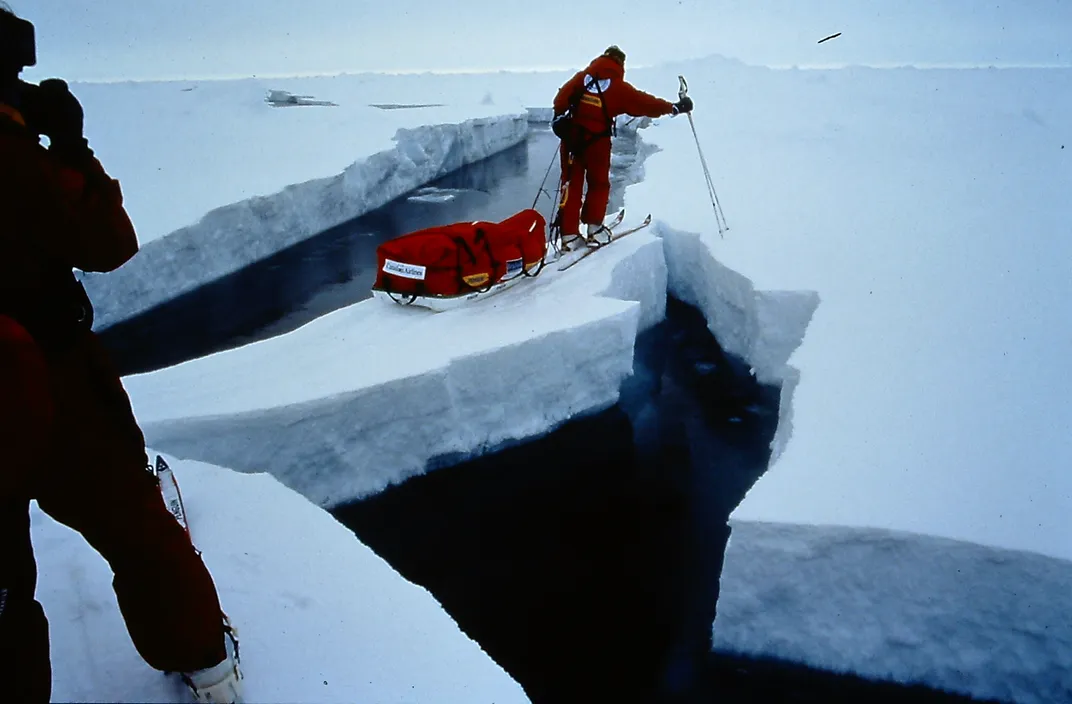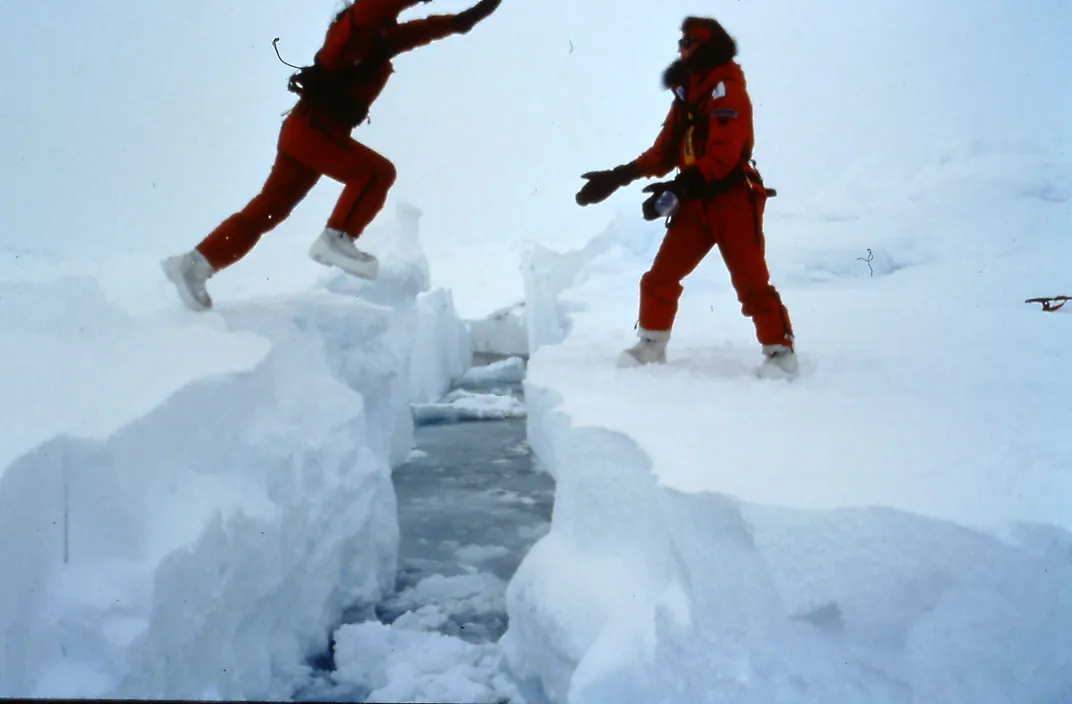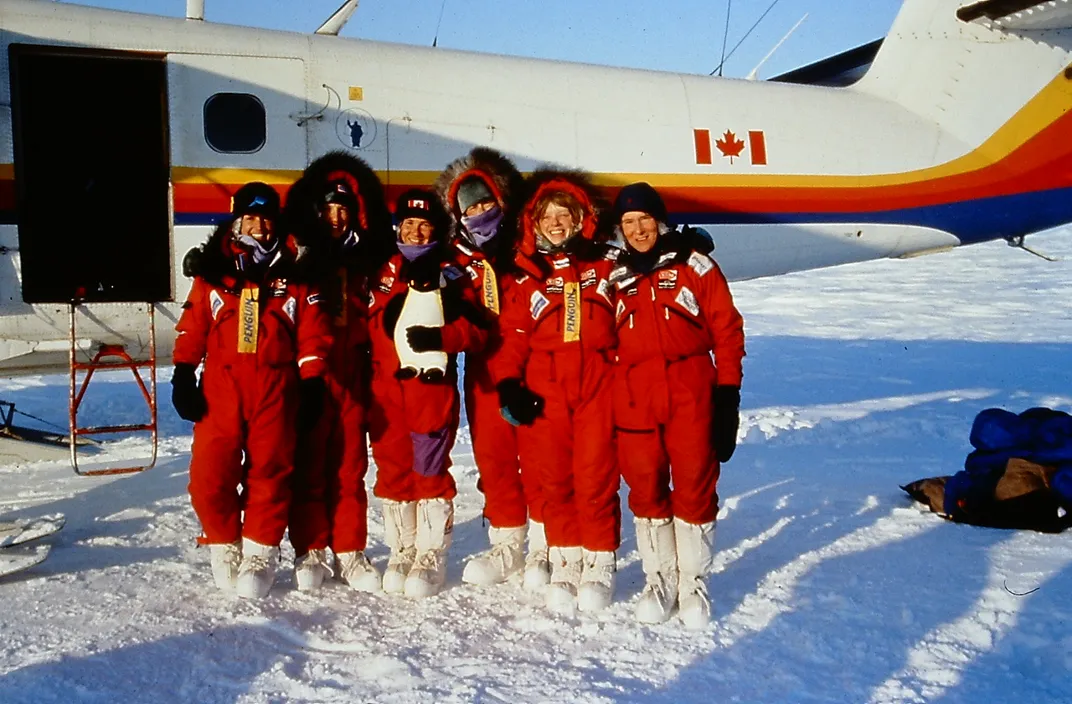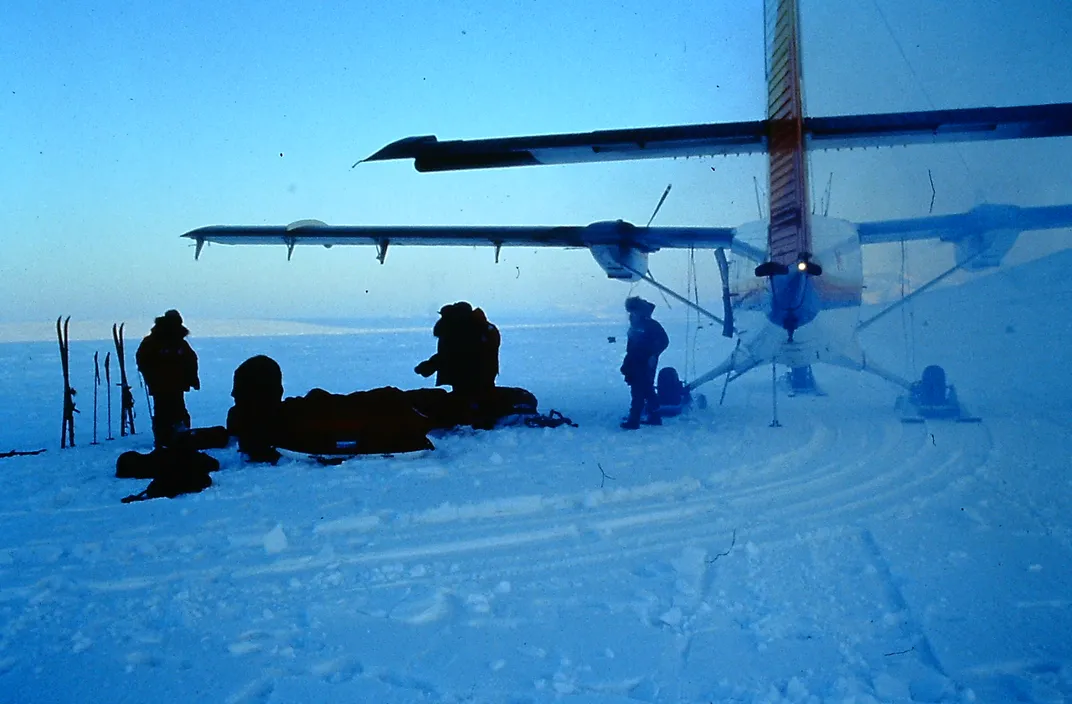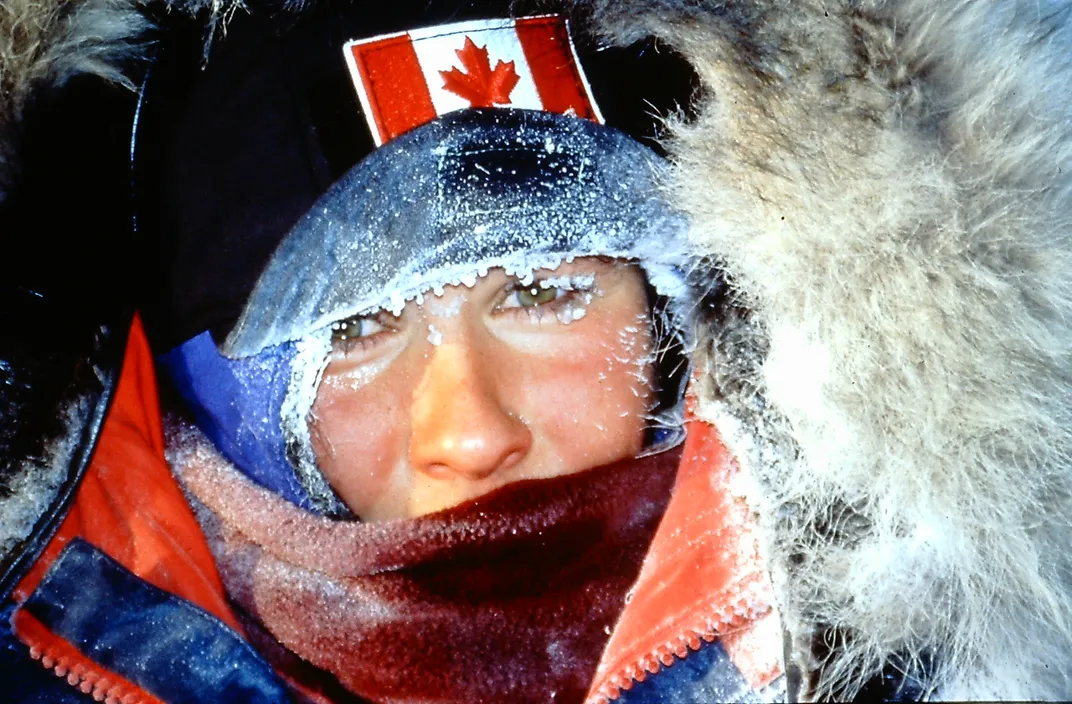The Amazing Story of the First All-Women North Pole Expedition
Answering an ad in a newspaper, 20 amateur explorers attempted to ski from Arctic Canada to the top of the world
The frigid landscape of the North Pole is a stark and dangerous environment. There is no land underneath the rugged terrain on the geographic top of the world; it's all ice interspersed with frequent stretches of deadly cold water. This treacherous environment has long tempted explorers—from Robert Peary and Matthew Henson’s first trip in 1909 to Will Steger’s unsupported dog sled trip in 1986.
This year marks the 20th anniversary of one of the most epic but least known adventures: the first all-women relay expedition to the North Pole. ESPN’s latest 30 for 30 podcast recounts the inspirational and harrowing story of how 20 amateur women from the U.K. came together to undertake one of the most challenging expeditions on Earth.
The idea for the trip was "hatched on a whim," reporter and producer Rose Eveleth explains in the podcast. In June 1995, film financier Caroline Hamilton was chatting with her friend's boyfriend Pen Hadow, who was a polar explorer. She listened to his description of skiing to the North Pole and was inspired. "I thought, if he could do it so can I," she tells Rose.
The problem was that mounting an expedition was expensive. In Hadow's estimation the venture would cost roughly half a million dollars. So the duo came up with a plan to drum up publicity and sponsorship cash: Hamilton would organize the first all-women expedition to the North Pole. She wasn't just looking for super-elite outdoorswomen. Instead, she would open the expedition up to any woman who was fit enough to participate.
A few months later, a noticed appeared in the classified ads of The Telegraph:
"Applications are invited from women of any age, background and occupation, but they will have to prove fitness and commitment. They will have to put up with real pain and discomfort. They will wonder every ten steps what they are doing but they have the opportunity in an epic endeavor.”
That ad attracted 200 applications—and 60 those women showed up in the remote moorlands of Dartmoor National Park for two rounds of grueling tryouts. The group was whittled down to 20 amateur adventurers. Among the lot there was Ann Daniels, a former bank clerk and mother of young triplets; Sue Riches, a breast cancer survivor; Victoria Humphries, Sue Riche's daughter who joined not knowing of her mother's participation; and Matty McNair, one of two polar guides who would lead the group of amateurs to the top of the world.
The team was divided into five groups of four adventurers, each of which would tackle one leg of the 416-mile slog over the ice from Arctic Canada to the Pole, pulling their gear behind them on sledges. Facing temperatures of almost -50 degrees Fahrenheit, blasting winds and ever-changing ice, which could (and occasionally did) crumble into open water at any minute, the women carried on.
The challenges were deadly. On several occasions the plucky but inexperienced explorers came close to freezing to death. And though we won’t spoil the conclusion to the podcast, know that the trip not only challenged the minds and bodies of the women, it also reshaped the course of many their lives. Some of the participants continued on to trek to the South Pole and to relive the venture to the North Pole.
In the end, the story is a little bittersweet. It's unlikely that there will be any similar expeditions up North any time soon—if ever. In recent years, melting sea ice has made human-powered trips to the pole extremely treacherous. Every year, the ice has grown thinner and less stable. But perhaps these amazing women's sacrifices and spirit of adventure can inspire people in the fight to protect our breathtaking but delicate environment.
